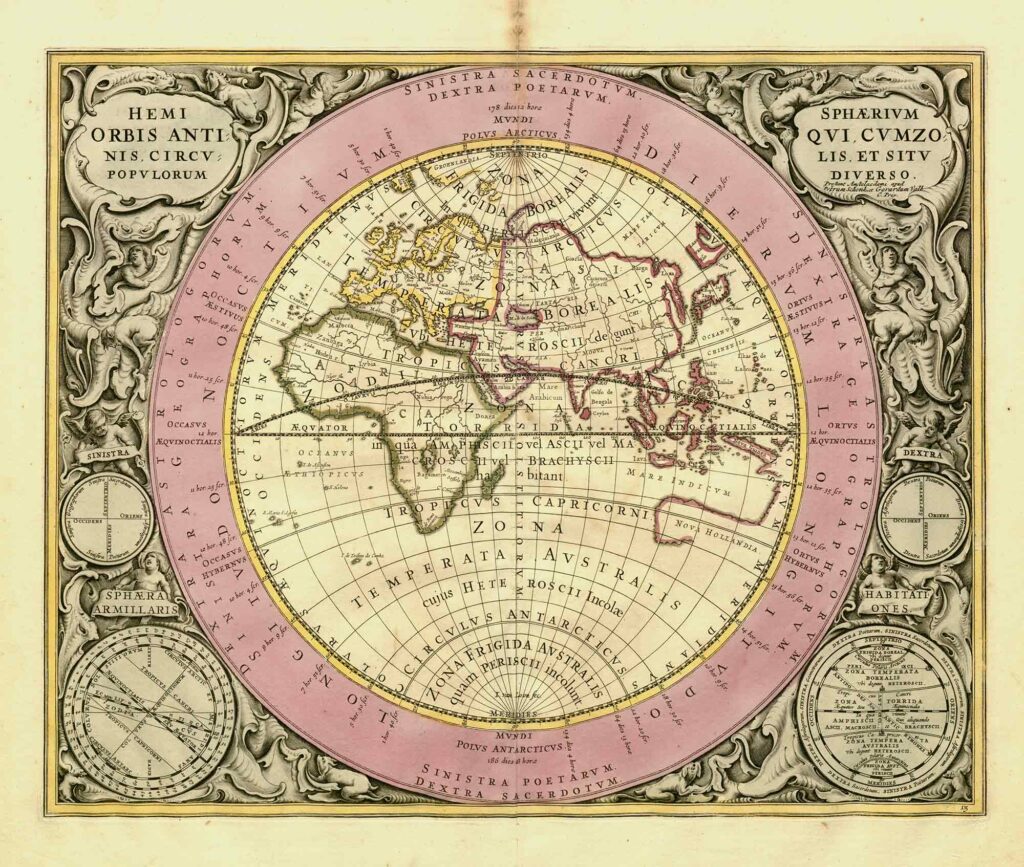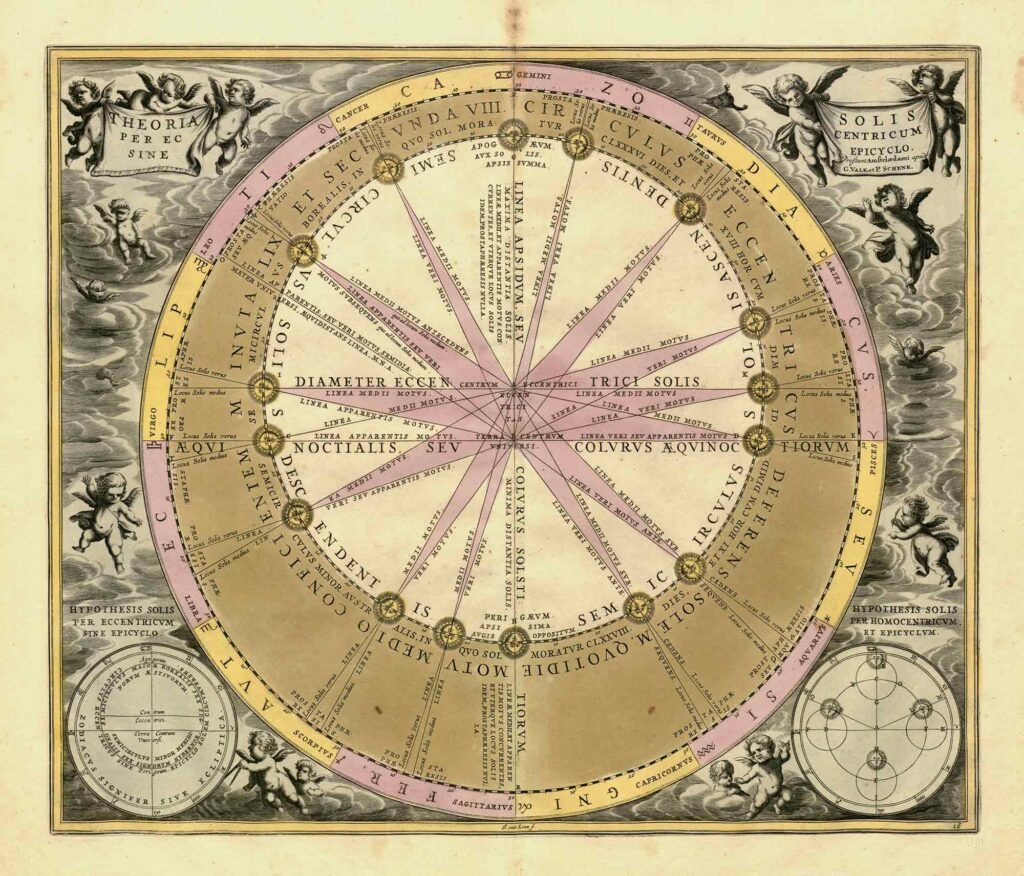Johannes Janssonius: A Closer Look at the Publisher Behind the Iconic Harmonia Macrocosmica
Are you curious about the man behind the publishing of the Harmonia Macrocosmica, the groundbreaking astronomical atlas that revolutionized our understanding of the universe? Let’s dive into the life and legacy of Johannes Janssonius, one of the most influential publishers of the 17th century.
Who was Johannes Janssonius?
Johannes Janssonius, often known in the Anglophone world as Jan Jansson, was a renowned Dutch cartographer and publisher born in the year 1588. He belonged to the ‘Golden Age’ of Dutch cartography, a period marked by remarkable innovations and advancements in mapping and geographical knowledge.
“Janssonius was not just a mapmaker, but a visionary who profoundly influenced the world of cartography.”
Johannes Janssonius: A Publisher Ahead of His Time
Ever wondered what made Janssonius stand out among his contemporaries? It was his relentless pursuit of accuracy and detail. He was known for his meticulous attention to the minutest details and his unwavering commitment to providing only the most accurate representations of geographical and celestial bodies.
His work was not just about maps and atlases; it was a testament to his extensive knowledge, his pioneering spirit, and his unwavering quest for excellence. No wonder he is considered a titan in the realm of cartography and publishing!
The Life and Legacy of Johannes Janssonius
There’s a captivating story behind Johannes Janssonius, a name that resonates in the annals of cartography. Born in Arnhem, Netherlands in, 1588, Janssonius came from a family deeply entrenched in the world of publishing and cartography. His father was a bookseller and publisher, and his brother-in-law was none other than the renowned mapmaker Jodocus Hondius.
Janssonius, following the family tradition, ventured into the publishing business, initially focusing on theological works. However, it was his foray into cartography that would define his legacy and etch his name into the history books.
In the year 1612, Janssonius married Hondius’s daughter, Elisabeth, which further connected him to the world of mapmaking. He moved to Amsterdam, the vibrant hub of European cartography and printing at the time. Janssonius co-ran a bookshop with Hondius, and later, he got more involved in the production of maps and atlases.
Throughout his career, Janssonius produced many significant works in cartography. His famous works include the ‘Atlas Novus’ and the stunning celestial atlas, ‘Harmonia Macrocosmica,’ which is still admired for its aesthetic and scientific value.
Janssonius’s death in 1664 did not mark the end of his legacy. His works, particularly the ‘Harmonia Macrocosmica,’ continue to be a source of fascination, a testament to his ingenuity, and a mirror to the astronomical knowledge and artistic skills of his era.
In summary, Janssonius’s life was a continuous pursuit of knowledge and excellence in publishing and cartography. His contributions have left an indelible mark on the history and development of cartography. His legacy, especially in the field of celestial mapping, remains significant up to the present time.
How did Johannes Janssonius become involved with the Harmonia Macrocosmica?
When the question arises, “How did Johannes Janssonius become involved with the Harmonia Macrocosmica?”, one must delve into the annals of history to unearth the answer. It’s a fascinating tale of a man’s devotion to his craft and his insatiable thirst for knowledge.

In the 17th century, the world was a vastly unexplored place, and the universe even more so. This was an era when the boundaries of knowledge were constantly being pushed, and the study of the cosmos was gaining momentum. It was during this time that Johannes Janssonius, already a prominent publisher in Amsterdam, decided to venture into the realm of celestial cartography.
Janssonius’ involvement with the Harmonia Macrocosmica was not a spur-of-the-moment decision. It was an ambitious project that required a deep understanding of astronomy, combined with an artistic flair to depict the cosmos in a way that was both accurate and aesthetically pleasing. Could there be a more fitting challenge for a man like Janssonius who was known for his detail-oriented approach and his unquenchable curiosity?
The Harmonia Macrocosmica was the brainchild of German-Dutch cartographer Andreas Cellarius. However, it was Janssonius who recognized the immense potential of this celestial atlas. Thus, in 1660, he decided to publish it. The resulting masterpiece is a testament to both Cellarius’ astronomical knowledge and Janssonius’ publishing acumen. So, how did Janssonius become involved with the Harmonia Macrocosmica? It was through his vision, his passion for knowledge, and his keen business sense.
It’s worth noting that Janssonius’ involvement with the Harmonia Macrocosmica was not limited to just publishing. He also contributed to the atlas’ design, ensuring that the celestial maps were not only scientifically accurate but also aesthetically stunning. The Harmonia Macrocosmica is a testament to Janssonius’ belief in the harmony between science and art, a belief that still resonates today.
What other works did Johannes Janssonius publish?
eserving of his esteemed reputation, Johannes Janssonius was not a one-trick pony. The publication of the Harmonia Macrocosmica was just one facet of his prolific output as a publisher. But what other works did this luminary publish, you might ask?
Aside from the Harmonia Macrocosmica, Janssonius is perhaps best known for his contribution to cartography. His works encompassed a vast collection of maps and atlases, some of which were in collaboration with other notable names in the field, such as Jodocus Hondius.
- Atlas Novus: This was a significant project by Janssonius, which was expanded over the years to eventually include eleven volumes. It was an ambitious endeavor, featuring maps of various parts of the world. The Atlas Novus reflected the expanding knowledge of geography during the 17th century.
- City Atlas: This collection of town plans and bird’s eye views was another notable work. It covered cities across Europe, demonstrating Janssonius’ attention to detail and his ability to encapsulate the essence of urban landscapes within his works.
- Atlas Contractus: Published posthumously in 1666, this was an abridged version of his earlier Atlas Novus. It was evidence of Janssonius’ continuous push to make knowledge of geography more accessible.
Moreover, Janssonius didn’t limit himself to just atlases and maps. He also ventured into the world of biblical works, publishing a Dutch version of the Bible in 1657, titled ‘Biblia, dat is De gehele Heilige Schrift’. This was another demonstration of his versatility as a publisher.
In essence, Johannes Janssonius’ publishing career was as diverse as it was expansive. From celestial atlases to biblical texts, his works painted a vivid picture of a man deeply engaged in the pursuit of knowledge, offering us a glimpse into the mind of an extraordinary publisher.

What are some interesting facts about Johannes Janssonius?
Delving into the life of Johannes Janssonius reveals a tapestry of intriguing elements that extend beyond his well-known contributions to cartography. Here are some fascinating tidbits that paint a more comprehensive picture of this influential figure.
- An extensive family connection: Johannes Janssonius was not the lone star in his family firmament when it came to cartography and publishing. Did you know that he was the son of Jan Janszoon the Elder, a publisher from Arnhem, and married into the renowned Hondius family, who were also influential cartographers and publishers? This allowed him to further cement his place in the cartographic world and broaden his influence.
- A multilingual publisher: Janssonius published works in several languages, including Latin, Dutch, English, and French. His ability to cater to a wide range of audiences is evidence of his international reach and appeal. Can you imagine the linguistic proficiency required?
- Not originally a cartographer: It may surprise you to learn that Janssonius did not initially set out to pursue a career in cartography. He started his career as a bookseller and publisher. It was only after his father-in-law’s death that he took over Hondius’ map business, thus beginning his journey as a cartographer.
- Atlas rivalry: Johannes Janssonius and another cartographic legend, Willem Blaeu, were fierce competitors. The two Amsterdam-based publishers vied for supremacy, each producing grand atlases that would redefine the world of mapping. The rivalry drove both men to new heights of innovation and accuracy in cartography, and their works are still revered today.
- Leaving a lasting legacy: The works of Janssonius, including the Harmonia Macrocosmica, were so influential that they served as the primary source of geographical information for many decades. His atlases were regularly updated and expanded, attesting to their ongoing relevance and importance.
Isn’t it intriguing how Janssonius, a man from the 17th century, continues to influence our understanding of the world today? His life and work remind us of the lasting impact that one passionate individual can have on their field, shaping it for centuries to come.
What are some recommended resources for further reading on Johannes Janssonius and the Harmonia Macrocosmica?
For those yearning to dive deeper into the realm of Johannes Janssonius and the Harmonia Macrocosmica, an array of resources abound. One can further explore the life, the works, and the indelible impact of this distinguished publisher and his seminal celestial atlas. But where to begin?
Books
- Atlas Novus by Johannes Janssonius – This exquisite collection of maps, originally published in the 17th century, offers a first-hand look at Janssonius’s extraordinary cartographic work.
- Celestial Gallery by Romano Guardini – While not exclusively about the Harmonia Macrocosmica, Guardini’s work provides illuminating insights into the history of celestial cartography and includes the work of Janssonius.
- The Golden Age of Dutch Cartography by Kees Zandvliet – This book provides a comprehensive overview of Dutch mapmaking in the 17th century, including the significant contributions of Johannes Janssonius.
Online Resources
- The David Rumsey Map Collection – A comprehensive digital collection featuring high-resolution images of maps and atlases, including works by Janssonius.
- The Rijksmuseum – This online collection includes several maps and atlases by Janssonius, viewable in high detail.
Academic Articles
- The Role of Johannes Janssonius in the Production of Atlases in Amsterdam by Peter van der Krogt – This scholarly article delves into the career and publishing practices of Janssonius.
- The Harmonia Macrocosmica of Andreas Cellarius by Robert H. Van Gent – Although primarily focused on Cellarius, this article provides excellent context for understanding the Harmonia Macrocosmica’s significance in the world of celestial cartography.
Whether you are a newcomer to the world of antique maps and celestial atlases or a seasoned enthusiast, these resources provide a wealth of knowledge. They offer a closer look not only at the life and works of Johannes Janssonius but also at the broader context of his time. Ready to unravel the mysteries of the Harmonia Macrocosmica and its publisher? The journey starts here.
Conclusion
In the remarkable journey through the life and legacy of Johannes Janssonius, we have encountered a man of intellect, innovation, and immense influence. A publisher who was ahead of his time, his work with the Harmonia Macrocosmica stands as a testament to his visionary prowess.

Indeed, who would have thought that someone from the 17th century would leave such an indelible impression on the world of cartography and publishing? His association with the Harmonia Macrocosmica, along with his other works, bear witness to his unwavering commitment to his craft.
From the cobbled streets of Amsterdam to the revered halls of academia, the name Johannes Janssonius resonates, echoing his enduring contribution to our understanding of the cosmos and our place within it. His life, replete with successes, failures, and tireless dedication, serves as an inspiration for all who come across his story.
Yet, isn’t it intriguing that despite his numerous accomplishments, there remain many aspects of his life that are shrouded in mystery? His life and legacy invite further exploration, pushing the boundaries of our knowledge and understanding. And isn’t that the very essence of curiosity that he himself embodied?
As you delve deeper into the life of Johannes Janssonius and his monumental work, the Harmonia Macrocosmica, may you find a renewed appreciation for the wonder of discovery and the boundless potential of human creativity.
And so, as we wrap up this exploration of Johannes Janssonius, let us be reminded of the power of curiosity, the richness of history, and the enduring impact of one man’s vision on our collective journey through the cosmos. His story, like the celestial maps he published, guide us across the vast expanse of human knowledge, inviting us to look up, to explore, and to wonder.






